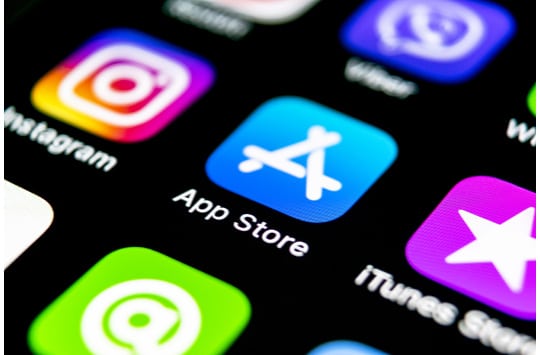
Facebook has come to dominate the online media landscape by virtue of its vast power to drive traffic.
There are a lot of Facebook users:

And they use Facebook to get news:

(Look at the third bar from the top!)
Over half of Facebook users are reading, watching, and sharing news. Research by Pars.ly (reported by BusinessInsider) indicates that up to 40% of media referral traffic comes from Facebook. That’s millions upon millions of user sessions that come from Facebook referrals.

Now, Facebook has always taken the position that it is not in the editorial business. It employs no editors, makes no editorial judgements, and curates no content. That has allowed the company to duck the blame when controversial or “fake” news popped up in user news feeds; Facebook just pointed to the algorithm. Nonetheless, being an editor-free publisher has caused the social behemoth some problems.
- Russia-linked ads pushed users to fake news pages. (Engadget)
- News Outlets to Seek Bargaining Rights Against Google and Facebook (NYTimes)
- Facebook is often accused of censorship (here and here and here and here)
In fact, the company has come under increasing pressure to change its ways, somehow. Writing last November, The Economist pointed out that Facebook has been deprioritizing publishers for a while now. “Facebook calls its “News Feed” offering [the default roll of posts from friends, family, and media sources that you see when you arrive at the site] its most important product, but in recent years it has tweaked the feed in ways that de-emphasise actual news, instead prioritising updates from friends and family over those from publishers.”
And so over time, the company has been showing fewer posts from media sites in favor of posts from friends and family. Here’s research showing the general trend compared with Google over the last year, showing Facebook’s declining media referral traffic since June 2017:

(Source: Pars.ly, via Recode)
Then, in October 2017, Facebook ran an experiment in six overseas markets. In those markets, all posts from media companies were removed from the news feed and segregated into an “Explore” feed. The immediate effect on publisher referral traffic was dramatic, as seen in this data from Slovakia:

(Source: medium.com, via Vanity Fair)
Writing in Inc., Amanda Pressner Kreuser wrote — in a post titled, “Facebook Just Made a Move That’s Terrifying for Brands–and a Real Loss for Users” — “This test is running in six countries currently, but I would be shocked if it doesn’t go wide in 2018–and if it doesn’t drag traditional brands in as well.”
So, over the past six months, Facebook has been pondering the problem of news/media posts in user feeds, and it has been experimenting with variations on this solution: get rid of media and news posts.
And last week, on Jan. 11, the guillotine fell. Facebook decided to go even further in cutting media posts out of user news feeds. Adam Mosseri, Head of News Feed at Facebook, posted this:
- Because space in News Feed is limited, showing more posts from friends and family and updates that spark conversation means we’ll show less public content, including videos and other posts from publishers or businesses. As we make these updates, Pages may see their reach, video watch time and referral traffic decrease. The impact will vary from Page to Page, driven by factors including the type of content they produce and how people interact with it.
Well, what is all the fuss about? Facebook tweaks its news feed, publishers see a little less reach, and users see a few more birthday videos and baby pictures. Right?
Well, people who are positioned to know better are taking it hard.
Here’s the editor-in-chief of the San Francisco Chronicle, in a tweet quoted by Business Insider.
- “I cannot overstate how much Facebook is just screwing our news operations and our democracy over and over and over,” said Audrey Cooper, San Francisco Chronicle’s editor-in-chief, slamming Facebook’s move to solve its fake news problem by getting rid of news altogether.
The New York Times is less dramatic, but still sees hard times ahead for publishers:
- As a result of Facebook’s attempt to distance itself from an overheated news cycle and make a return to its friends-and-family roots, publishers who depended on it for traffic are likely to find themselves in trouble. News outlets that have built a strong bond with readers and viewers through other means will be watching closely, to see whether the size of their audiences – and corresponding advertising dollars – will shrink in the coming months.
That reaction was echoed by many publishers. According to Business Insider:
- In a dramatic shake-up Facebook said it would start playing up status updates from friends and family in the News Feed, effectively deprioritizing content from media publishers and brands. Publishers in particular – many of whom have relied on Facebook to build up huge audiences and achieve viral gold – are likely to take a hit from the change.
Bottom line: fewer media posts on Facebook means lower referral traffic and fewer eyeballs looking at ads. Revenue for publishers, especially those dependent on Facebook traffic, is going to fall.
However, several pundits and publishers say that there is a silver lining in Facebook’s abandonment of media posts.
The Wall Street Journal, which relies heavily on its subscription business model, welcomed Facebook’s move, according to the Economist.
- “We’re pleased that the conversation has moved on from this ideological position that all content should be free,” says an executive at the Wall Street Journal, which charges readers for digital access.
At Vox, both sides are explained:
- But while there’s plenty of reason to be skeptical, there’s also some reason for optimism. … in order to play the new Facebook game, media outlets will have to put even more emphasis on creating interpersonal connections with their readers.
Quoted in Digiday, Arthur Wang, CMO, Turner’s Super Deluxe, did not seem very concerned.
- We would have to cobble together ways to find other revenue streams. Yes, Facebook is a big part of what we do, but we have other revenue streams.
In a passionate rant, the Atlantic’s Franklin Foer went on at length to describe the upside. In his opinion, Facebook “broke journalism” and “broke democracy,” and is now declaring defeat and backing away from its mess. Here is his take on what Facebook has done to hurt media:
- Facebook has encouraged media to become dependent on it. When Facebook asked media to create Instant Articles, it submitted. When Facebook encouraged media to throw resources behind the production of short videos, media obeyed and shuffled precious editorial dollars into the pursuit. And now after monkeying with media, after exploiting media’s abject reliance on it, Facebook has essentially told media to kiss off. By downgrading journalism in his News Feed, he’s choking off a stream of traffic, and, therefore, choking off a stream of revenue.
And here is Foer’s take on the silver lining … it hastens the day that publishers realize they cannot win the ad game — and perhaps turn to other business models, such as subscription, to stay afloat.
- Facebook has just done media the biggest favor of them all. It has forced media to face the fact that digital advertising and ever-growing web traffic will never sustain the industry, especially if that traffic comes from monopolies like Facebook hoping to claim the entirety of digital advertising dollars for themselves.
How can publishers cope with a decreased level of traffic from Facebook? Writing at Digiday, Max Willens says they will do more of what they are already doing:
- Publishers have been working to reduce their dependence on the giant social platform, a trend that’ll likely accelerate now that Facebook says it will prioritize users’ posts over publishers’ in the news feed. To protect against what’s been an ongoing decline in referral traffic, publishers have been adding new social distribution channels, investing more resources in existing ones and beefing up internal tools that deepen the relationships they have with existing users.
Publishers must look to new social platforms and strengthen current ties to others. Facebook is not the only player out there. For example, according to Willens, “The Daily Beast, which according to SimilarWeb analysis gets more social traffic from Reddit and Twitter than Facebook, is putting more effort into Flipboard to build traffic inside the app and also drive users directly to its site.”
And publishers must strengthen the ties that bind them to their users, for example, through subscription. That suggests that now, as their posts fade away from Facebook, is the time for publishers to make more tempting subscription offers, to grow an audience (even at some cost in subscription revenue) to the greatest extent possible.
Kunal Gupta, CEO of Polar, puts it this way:

The strength that publishers offer is that they are more trusted than social platforms.
Here’s some data comparing trust levels in the United Kingdom and in the United States:

(Source: Sharethrough. Note shorter bars are better, showing less distrust.)
As publishers work to migrate readers out of Facebook, they need to leverage that trust advantage to build relationships and make their sites premium content destinations.
Insider Take
In the face of several controversies, Facebook is changing its algorithmic recipe for populating user news feeds. That means less referral traffic, decreased opportunity for brand building, and a drop in revenue. But in the long run, moving away from Facebook’s walled garden of free content is a must for publishers who need paying subscribers to replace, or at least supplement, display advertising.







